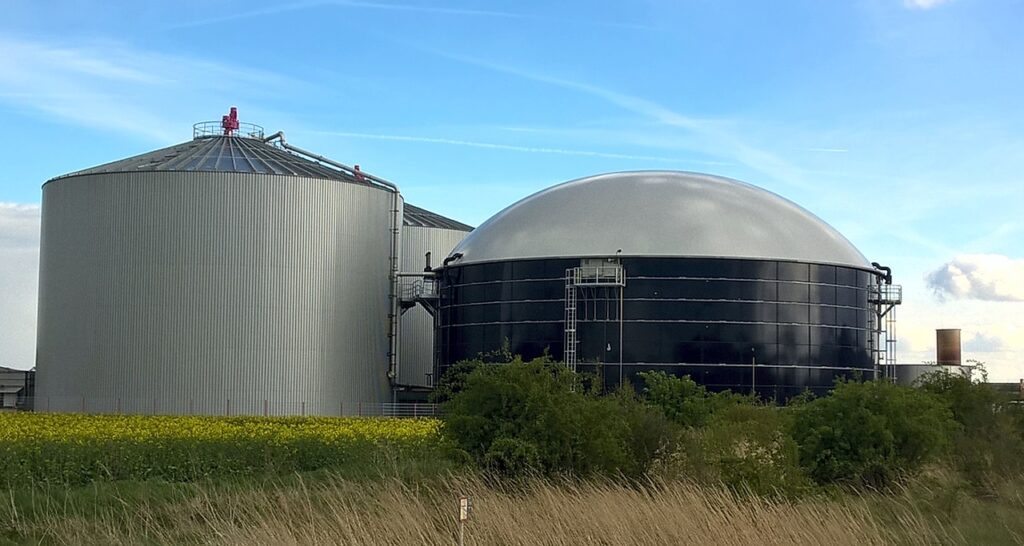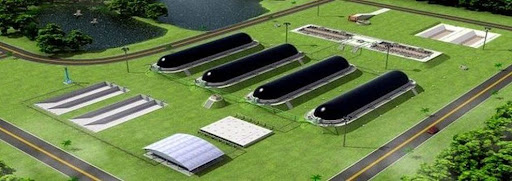
The use of biogas production as a renewable energy source has the potential to contribute to a sustainable energy future. The fuel originates from the decomposition of organic materials. South America has a lot of agricultural, livestock, and other waste that is able to produce biogas. Biogas can assist generate electricity in remote areas while also improving access to energy services. It may also cut reliance on agricultural goods alone. Brazil, for example, leads the world in biogas production due to its large agricultural industry. Other countries, including Colombia, Chile, and Argentina, are making progress in biogas generation. This happens by the use of agricultural waste, livestock manure, and organic municipal garbage.
Materials for Biogas Production
For successful energy production, biogas requires a variety of materials. Using these resources and using technical improvements can help unlock the potential of biogas. Animal manure, crop remains, organic waste, and sewage sludge are all necessary feedstocks for successful biogas generation. This feedstock is then used in biodigesters to produce energy before being stored as gas. Energy production necessitates the use of distribution networks and power generation equipment. Also, the production process requires human resources, financial resources, and favorable policies.
Innovative Techniques in Biogas Generation
Biogas production processes vary, reflecting South America’s diverse agricultural practices. Although South America’s biogas business is still emerging, there is great room for growth. This is due to ongoing advances in technology and infrastructure. The following are technologies used in biogas production:

- Landfill biogas recovery systems – these are systems that capture biogas generated from the decomposition of organic waste in landfills. For example, in Brazil, there are several projects converting landfill gas into energy.
- Industrial biogas plants – these are systems found in larger agricultural and industrial operations. They have designs to handle large volumes of waste while integrating with existing industrial processes. This leads to energy production, or biomethane.
- Co-generation plants – these plants generate electricity and heat from biogas, which then powers ethanol production facilities.
- Anaerobic digesters – these include fixed-dome digesters, floating-drum digesters, plug-flow digesters, and upflow anaerobic sludge blanket reactors. They use agricultural waste like manure, crop residues, and industrial wastewater.
- Biodigester bags – these are portable and easy-to-maintain PVC bags used in rural and peri-urban areas. They are popular in areas where infrastructure is quite limited and produce biogas for cooking and lighting.
- Biogas upgrading technologies – water scrubbing serves to remove carbon dioxide and other impurities from biogas. This makes it suitable for injection into natural gas grids or use as vehicle fuel. The membrane separation technology separates methane from other gases in the biogas.
Effects of Biogas Production on the Energy Market
South America’s ongoing biogas production has an impact on energy markets by diversifying energy sources. It also improves energy security and encourages energy sustainability. Advances in technology and policy may lead to increased biogas production in the region. The biogas market was worth $47.70 billion in 2023 and is predicted to grow to $81.79 billion by 2033. This is how biogas production affects the South American energy market.

- Energy security – biogas plants can install near feedstock sources such as food processing facilities and farms. This reduces the need for long-distance energy transportation and improves local energy resilience. For instance, in Brazil, where the electricity grid is reliant on hydropower, biogas helps maintain grid stability during dry periods.
- Economic and environmental benefits – the production of biogas creates jobs, which also boosts local economies. Conversion of organic waste into energy helps reduce waste disposal costs and lower greenhouse gas emissions.
- Integration into existing industries – biogas integration into the sugarcane industries in Brazil creates new opportunities for energy generation.
- Energy diversification – biogas provides a renewable alternative to fossil fuels. This helps countries reduce dependence on imported oil and natural gas. Biogas also complements other renewable energy sources like hydropower, solar, and wind. This is by providing a stable, dispatchable energy source.
- Market and policy impacts – South American governments are providing incentives for biogas production. This by providing subsidies, feed-in tariffs, and regulations that mandate the use of renewable energy. The integration of biogas into national energy grids contributes to the energy mix, which helps stabilize energy prices.